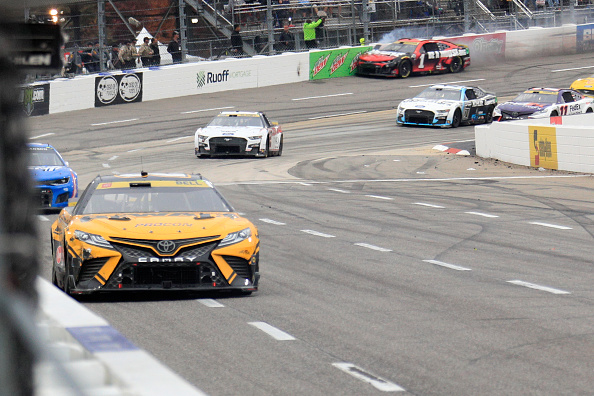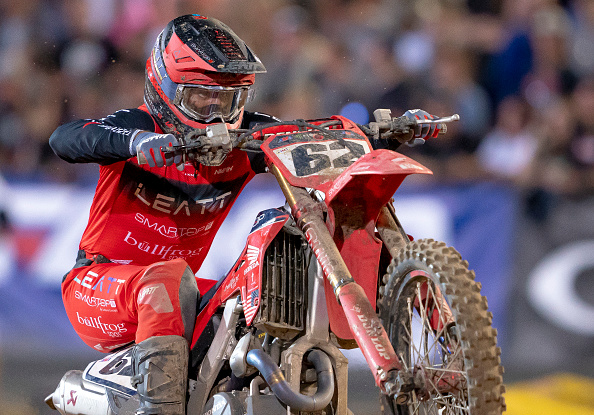NASCAR earlier this week wrapped up a two-day testing session with the Next Gen Cup Series Car. Well over a dozen drivers took to the Charlotte Roval over the course of these sessions on Monday and Tuesday. Including some cameo appearances from IndyCar/F1 champ Jacques Villeneuve, former 24 Hours of Daytona winner Joey Hand, and F1/K1 Boston icon Kaz Grala. During these tests, NASCAR gave out some crucial information for the rules packages next year. This can be considered either good or bad news depending on what kind of racing you like. In any case, however, here is how things will look for next year.
Be sure to keep up with all of our NASCAR Racing and DFS coverage.
Next-Gen Car Spec Notes
As a refresher for those not up to speed, here is some new features coming with the seventh generation NASCAR Cup Car. Up first is spec chassis, being made by Technique, owned by former IndyCar driver Ronnie Johncox. Next up is the inclusion of an independent rear suspension, after a lifetime of using only solid rear axels.
One of the more polarizing changes has to do with the wheels. While the jump from 15-inch steel to 18-inch aluminum wheels hasn’t created much uproar, single center-lock lugnuts have. A big byproduct of this change will be much faster pitstops, making what you see next year in NASCAR be similar to present-day IndyCar. The wheels for those interested are being manufactured by BBS. Another pit stop-related change has to do with fueling. Out are the days of the crew guy carrying around a giant fuel can. In are the days of clamp hoses, as seen in IndyCar, IMSA, etc.
Rear diffusers are another brand new addition to the Cup Series car. The hope is this can help offset cars literally and metaphorically, smacking a wall of air going behind another car, which has been a problem in recent years. Sequential shifting with a five-speed gearbox is also brand new, up from a four-speed H-pattern shifter. The last major note is composite bodies, which have been used in the Xfinity Series full time as of 2019. These are much easier to assemble (interlocking panels), and more importantly, fix than sheet metal bodies used now. They also weigh less to boot. Now for what the engine packages look like.
Intermediate Package (1.5 Mile Tracks)
In a move that has been received with mixed reactions at best, the package for intermediates (excluding Darlington and Nashville) is as follows. Cars will be running a V8 550 horsepower engines across the board, along with an eight-inch spoiler. To put this into context, the NASCAR Xfinity and Trucks Series currently run engines between 650 and 700 horsepower across the board. The current Cup Series cars have usually used 500hp engines in years past in intermediates in select events, but never the full tilt. For better or worse, expect racing more akin to the old IROC series as opposed to the Xfinity Series.
[su_youtube url=”https://youtu.be/99qvMknS3RY”]
Short Track and Road Course Package (Includes all other tracks under 1.5 miles)
For just about everything else on the Cup Series schedule, horsepower dropoff is not as severe. Engines will be at 670 horsepower, accompanied by four-inch spoilers at every race. This should not hurt the current short track product much hopefully which is good news. It would be hard to argue that NASCAR short-track racing is not the best on-track product the series has. Right behind it would likely be Road Courses, which also will likely be good, and best-case scenario get better.
Superspeedway Package (Daytona and Talledega)
As of the time of writing, the 2022 Superspeedway package has yet to be finalized. With that said, however, NASCAR did have a test session with the Next Gen cars at Daytona in early September with over a half dozen cars. Drivers there included Joey Logano, Austin Dillon, Chris Buescher, William Byron, and Ricky Stenhouse Jr. On day two, engines ended up being reduced to 510 horsepower via the taped spacer. One of the big complaints from drivers was heat in the car, which is notable. Would imagine that NASCAR has been in the lab to make the cars cooler for the drivers, as that could become a gigantic problem in the summer months.
On the plus side of things, multiple drivers, including Byron and Stenhouse, seemed to think the test went well.
“I thought [the testing] went really well. We got really aggressive there in that second drafting session. I feel like we were all pushing each other to make moves, and everyone was pretty comfortable with it, so that was really good to see.”- William Byron
“All in all [the car] drove really good and felt comfortable. Just trying to figure out how we’re going to make better racing. Making sure that we can pass, get good runs, create good racing. I was really happy, I thought we all did a good job getting out there and working the lanes, working the bottom, top, pushing each other. Really tried to simulate as much as we could a real race and everybody did a good job of that.” – Ricky Stenhouse Jr.
A big plus for these cars as well is that they sound phenomenal. Take a listen.
[su_youtube url=”https://youtu.be/LuOfCy1I4f8″]
Debrief
Despite some skepticism from fans, the top brass in NASCAR still feels good about where they are and can be going into 2022 with this Next Gen car. So much so that President Steve Phelps went as far as saying this at the Sports Business Journal World Congress of Sports.
.@StevePhelps at #SBJWCOS on the Next Gen car: "Everything that is still ailing NASCAR, this is a panacea for what that is." pic.twitter.com/aGk4CZpNvT
— Adam Stern (@A_S12) October 13, 2021
A bold proclamation, one that could likely be brought up down the line if this does not come to pass. At the same time, it’s better for Phelps to say this than not be happy with where the Next Gen car is at. In any event, next year’s Coliseum Clash is getting closer by the day, a monumental day for this new car, and the sport as a whole.
Check us out on our socials:
Twitter: @PTSTNews and @TalkPrimeTime
Facebook Page: Prime Time Sports Talk
Join our Facebook Group: Prime Time Sports Talk
Instagram: @primetimesportstalk
Follow Jack Gaffney on Twitter @JackGaffneyPTST
Main Image Credit: Embed from Getty Images








4 Responses
These cars are never going to race well unless they either take away some of the downforce or increase the power. NASCAR seems to want everything these days to be Talladega style demolition derbies. Nascar has a large gap to Indycar and F1, but if they don’t change course that could evaporate.
A competing stock car series would be nice, but could destroy the sport like what happened to Indycar 25 years ago. If the theoretical new series was to be successful, they would probably need the Smith family to jump ship, otherwise they would have almost no races on ovals longer than a mile. I hope someone can stop this madness before it destroys the sport.
I know it’s not the best comp, but the Next Gen Cars on iRacing right now race 1.5s like glorified plate tracks. Wide open pretty much the entire time, not what I was hoping for
I’m not sure the author has watched NASCAR. Short tracks and road racing have been the only good product on track for the several years, thus their schedule changes. The 1.5 mile and superspeedway stuff has dropped off like a rock. The fans don’t wanna see that stuff.
NASCAR is a far far FAR piece behind F1, Indy, V8 supercars (which is basically what the gen 7 car is underneath ) and even Super Late Model racing.
I’m not sure what metric you use but in the US NASCAR is far, far beyond Indy or F1 in every metric. Viewers, TV ratings, attendance, web traffic, YouTube views, social media activity, merchandise sales.
Choose any metric and it’s not even close. Heck NASCAR is 2nd most popular sport in this country period. They beat every other sport in this country not named the NFL in all of those metrics too.